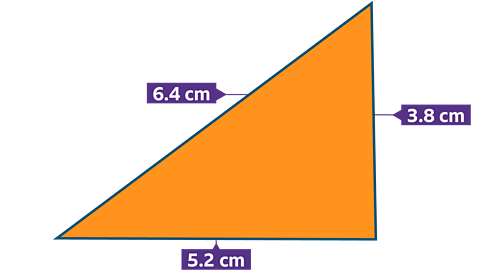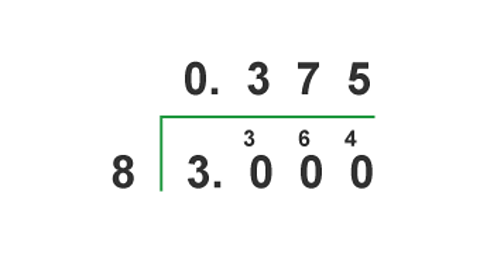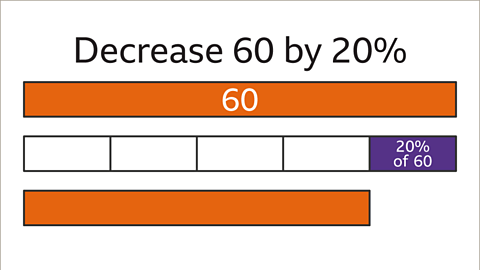Limits of accuracy / bounds
If a number or measurement has been rounded, it can be important to consider what possible values the exact value could have been. For example, if a cooker is 600 mm wide to the nearest 10 mm, it could actually be any width from 595 mm up to 605 mm тАУ so it might not fit into a gap that is exactly 600 mm wide.
To describe all the possible values that a rounded number could be, we use limits of accuracy.
Limits of accuracy or bounds are used to describe all the possible values that a rounded number could be.
The lower limit or lower bound is the smallest value that would round up to the estimated value.
The upper limit or upper bound is the smallest value that would round up to the next estimated value.
To calculate the upper and lower bounds,
- halve the degree of accuracy,
- add this value to the rounded value for the upper limit,
- subtract this value from the rounded value for the lower limit.
Example
Find the upper and lower limits for a mass of 62 kg, measured to the nearest kg.
Solution
- halve the degree of accuracy 1 kg ├╖2 = 0.5 kg
- add this value the rounded value for the upper limit
62 + 0.5 = 62.5 kg - subtract this value from the rounded value for the lower limit 62 тАУ 0.5 = 61.5 kg
There is a difference of 1 kg between the upper and lower limits because the accuracy of the measurement was to the nearest kg.
Example
Find the upper and lower bounds for a shelf of length 70 cm, measured to the nearest 10 cm.
Solution
- 10 cm ├╖2 = 5 cm
- Upper bound is 70 + 5 = 75 cm
- Lower bound is 70 тАУ 5 = 65 cm
There is a difference of 10cm between the upper and lower limits because the accuracy of the measurement was to the nearest 10cm.
Example
It was reported that there were 1800 fans at a match. This has been estimated to the nearest hundred. Calculate the minimum number of fans at the match.
Solution
- 100 ├╖2 = 50
- 1800 тАУ 50 = 1750
- The least number of fans at the match is 1750.
Question
When she was born, baby Nora weighed 3.2 kg, which was measured to an accuracy of 1 decimal place.
Calculate the upper and lower limits of NoraтАЩs birth weight.
The degree of accuracy is 0.1
- 0.1 ├╖2 = 0.05
- 3.2 + 0.05 = 3.25
- 3.2 - 0.05 = 3.15
Answer:
The upper limit is 3.25 kg and the lower limit is 3.15 kg.
Question
The diagonal of a laptop is 36.4 cm measured to the nearest millimetre.
Calculate the lower limit of the diagonal of the laptop.
Solution:
NOTE be careful with the units тАШ36.4 cm measured to the nearest millimetreтАЩ
This can be done in mm
- 36.4 cm = 364 mm
- 1 mm ├╖ 2 = 0.5 mm
or it can be done in cm
- 0.1 cm = 1 mm
- 0.1 ├╖2 = 0.05
Answer:
Lower limit = 363.5mm
or
Lower limit = 36.35cm
Combining measurements
Measurements are often combined, for example, when finding the perimeter or the area of a shape.
If the calculation involves adding or multiplying then:
- to find the maximum use the upper limits of each measurement,
- to find the minimum use the lower limits of each measurement.
This is not the same for subtraction and division, which is covered in the 'apply and interpret limits of accuracy' guide.
Example
Calculate the maximum perimeter of this triangle. All measurements have been rounded to 1 decimal place.

To find the maximum use the upper limits of each measurement
0.1 ├╖ 2 = 0.05
Upper limits are 6.45 cm, 3.85 cm and 5.25 cm. Maximum perimeter = 6.45 + 3.85 + 5.25 = 15.55 cm
Question
Find the minimum area of rectangular field with length 20 metres and width 32 metres.
(The dimensions have been measured to the nearest metre).
Solution:
Minimum length = 19.5 m, Minimum width = 31.5 m Area = length x width = 19.5 x 31.5 = 614.25
Answer:
Minimum Area = 614.25 m┬▓
Question
Rosie has a set of scales which weighs correct to the nearest 10 g.
She has 80 g of flour in one bag and 170 g of flour in another bag. She needs 250 g of flour to make a cake.
Does Rosie have enough flour?
Solution:
Rosie needs at least 250 g of flour.
The minimum amount of flour she could have is 75 g + 165 g = 240 g
Answer:
We canтАЩt say for sure if Rosie has enough flour as the lower limit of her total amount is 240 g.
Test yourself
More on M3: Number
Find out more by working through a topic
- count2 of 4

- count3 of 4

- count4 of 4
